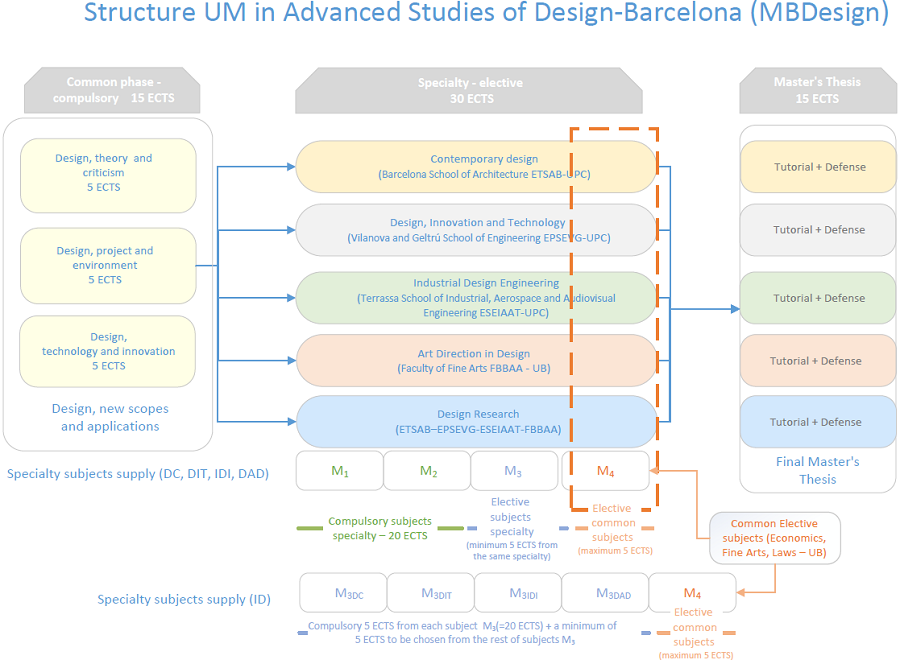Curriculum
Registered in the Registro de Universidades, Centros y Títulos (RUCT) of the Ministry of Education, Culture and Sports, by resolution of August 29, 2018, of the Secretaría General de Universidades, for which it is published the Agreement of the Council of Ministers of August 3, 2018, which establishes the official nature of certain Master's degrees and their registration in the RUCT (BOE de 7 de setembre de 2018)
The curriculum of the Master's Degree in Design has a total of 60 ECTS, distributed as follows:
|
The Master has a structure consisting on 15 compulsory ECTS credits, common for all students taking it.The five specialisations, which are worth 30 optional ECTS credits each, are described below. Each one is taught by one of the schools:
1. Contemporary Design (in English): Barcelona School of Architecture (ETSAB - Universitat Politècnica de Catalunya (UPC))
2. Design, Innovation and Technology (in English): Vilanova i la Geltrú School of Engineering (EPSEVG - UPC)
3. Industrial Design Engineering (in Spanish): Terrassa School of Industrial, Aerospace and Audiovisual Engineering (ESEIAAT - UPC)
4. Art Direction in Design (in Spanish): Faculty of Fine Arts (Universitat de Barcelona (UB))
5. Design Research: ETSAB, ETSEVG, ESEIAAT (UPC), Faculty of Fine Arts (UB)
To obtain the specialisation, a minimum of 25 ECTS credits must be taken and passed (of which 20 ECTS credits must be for compulsory subjects). The remaining 5 ECTS credits, up to 30, can be taken as another subject in the same specialisation or any other from the offer of optional subjects common to all the specialisations.
At the end of the master’s degree, students must pass the 15 ECTS credits of the master’s thesis in the chosen specialisation. Students who are allowed to pursue two specialisations will have to pass a specific master’s thesis suited to the curriculum followed throughout the master’s degree. The master’s thesis includes specific research in design and may be on a topic that can later be developed in a doctoral thesis.
